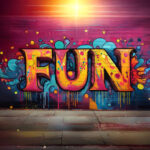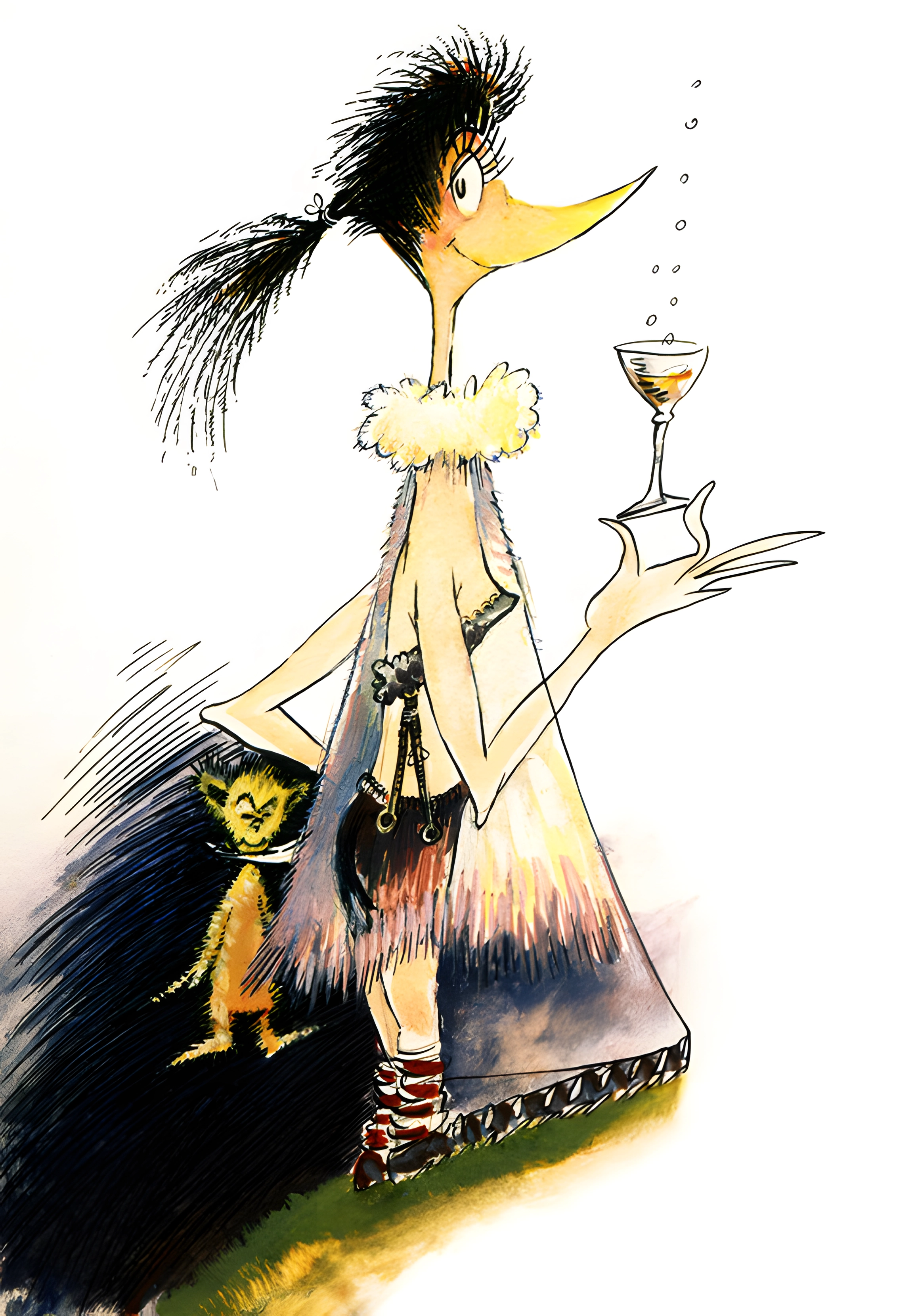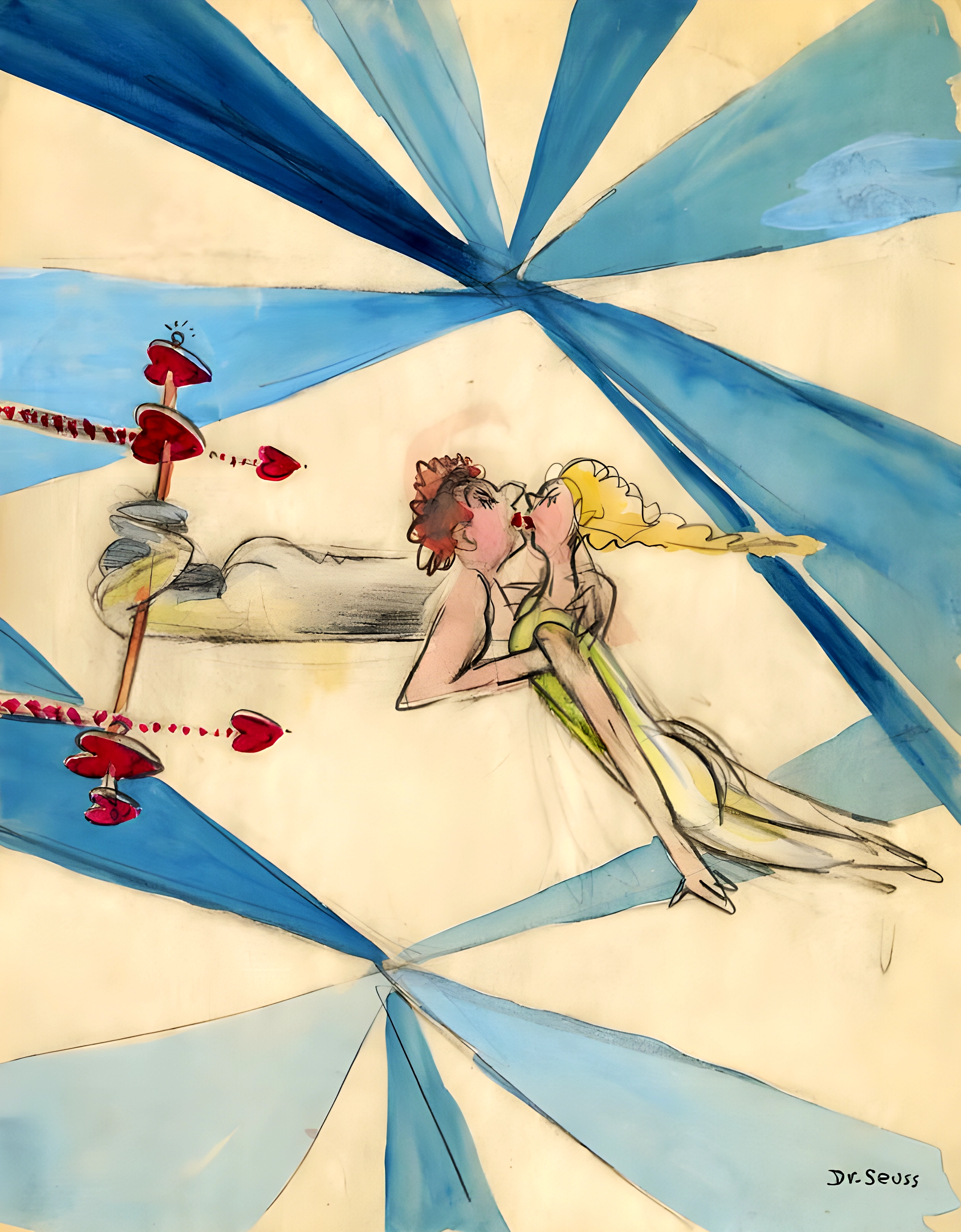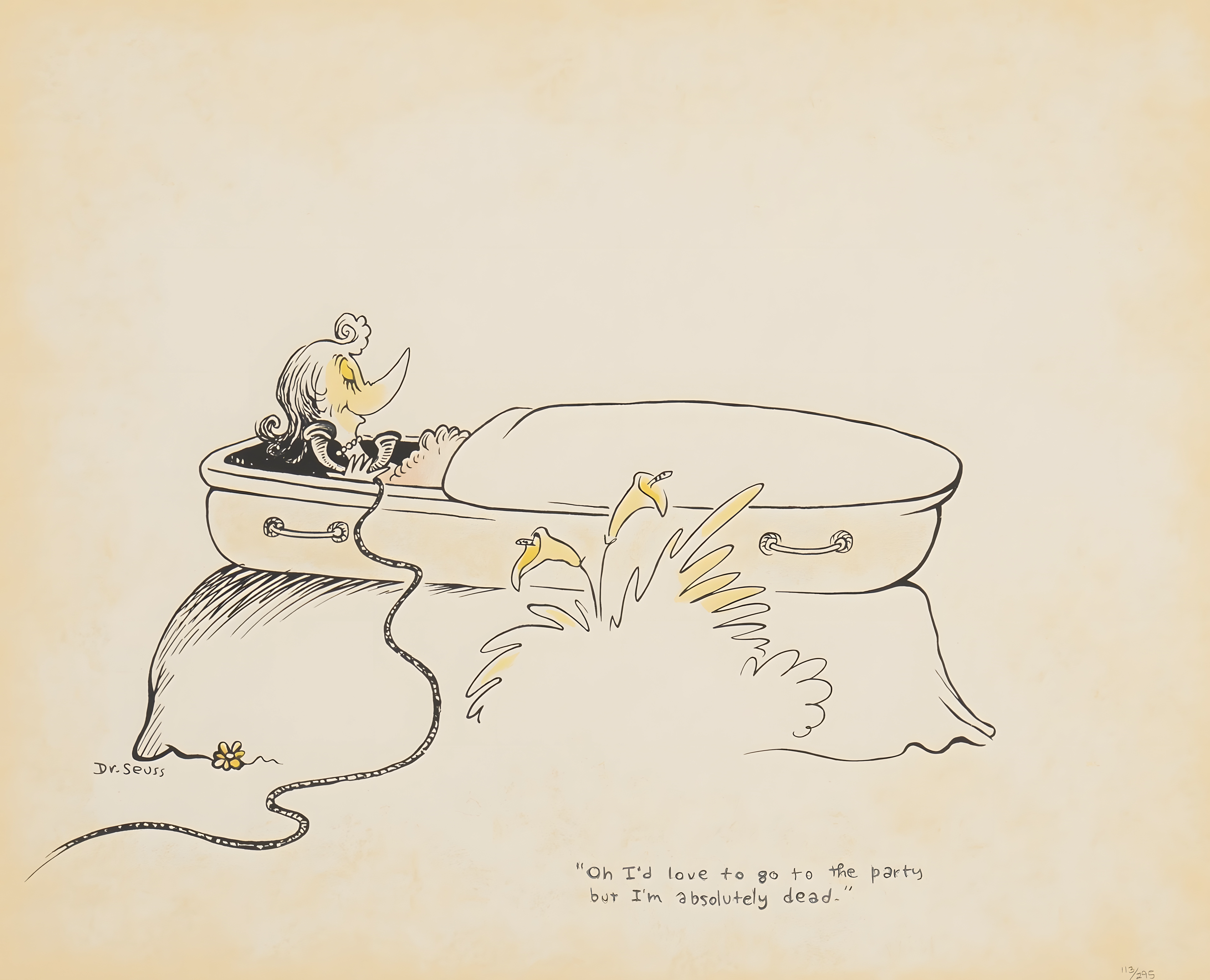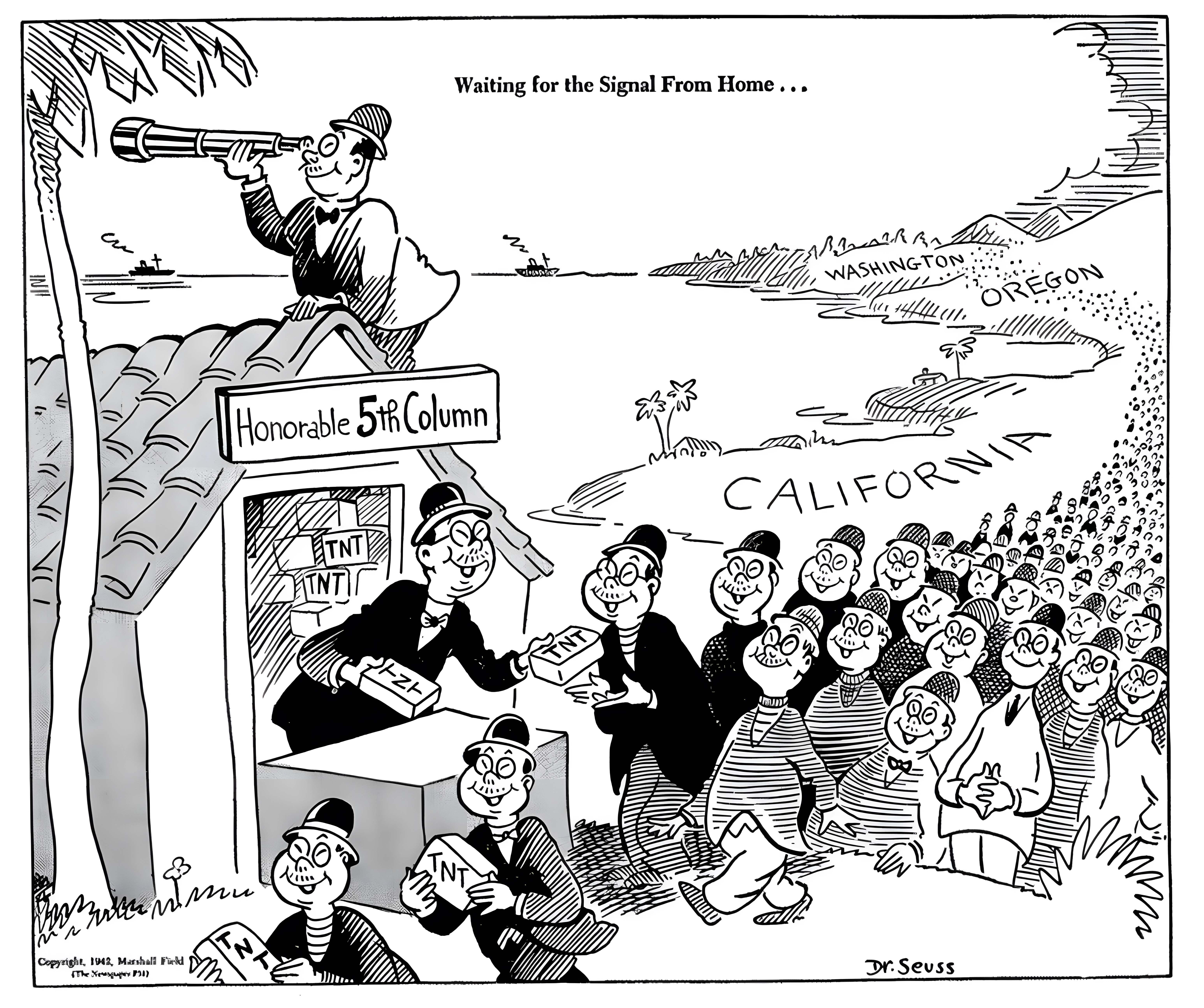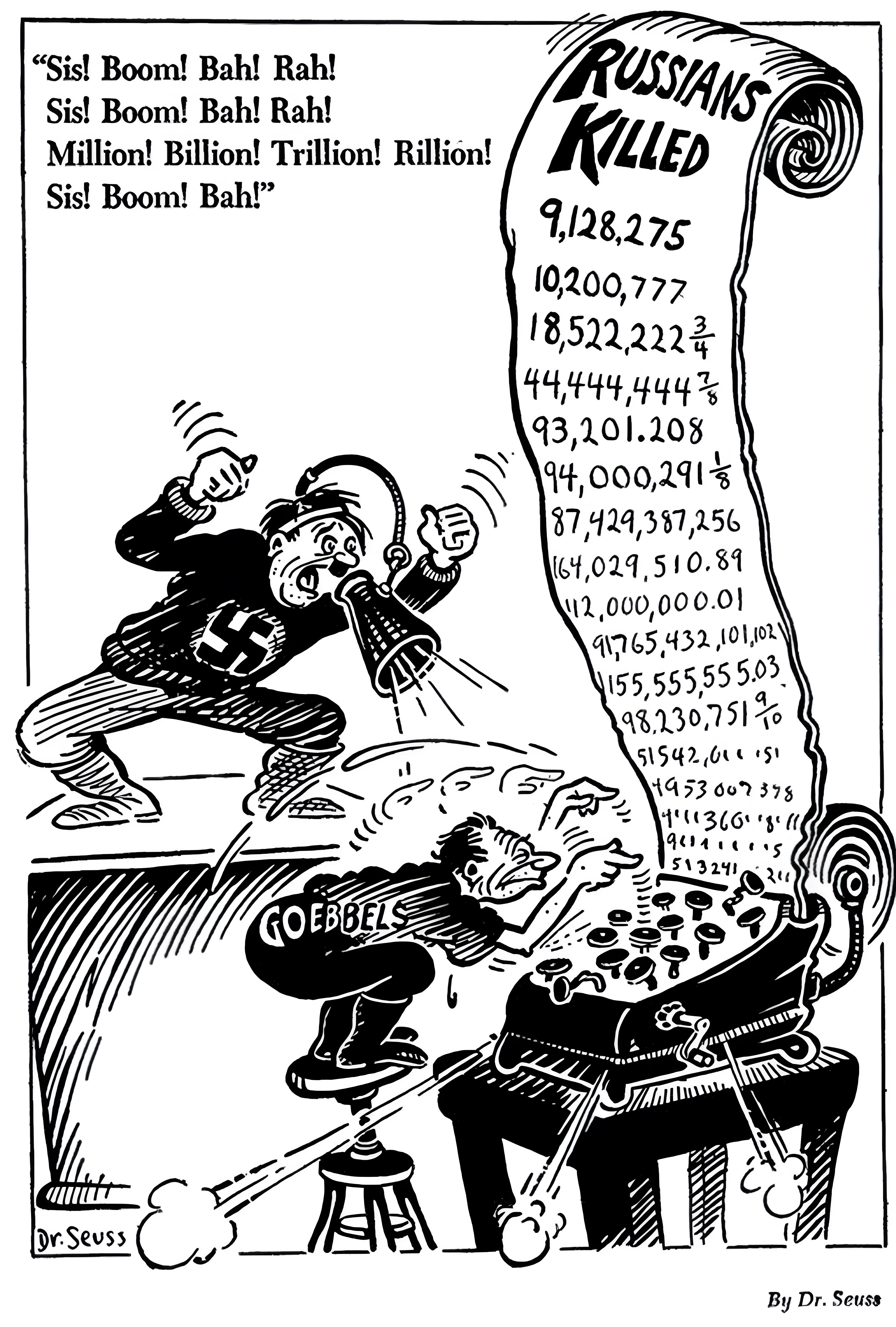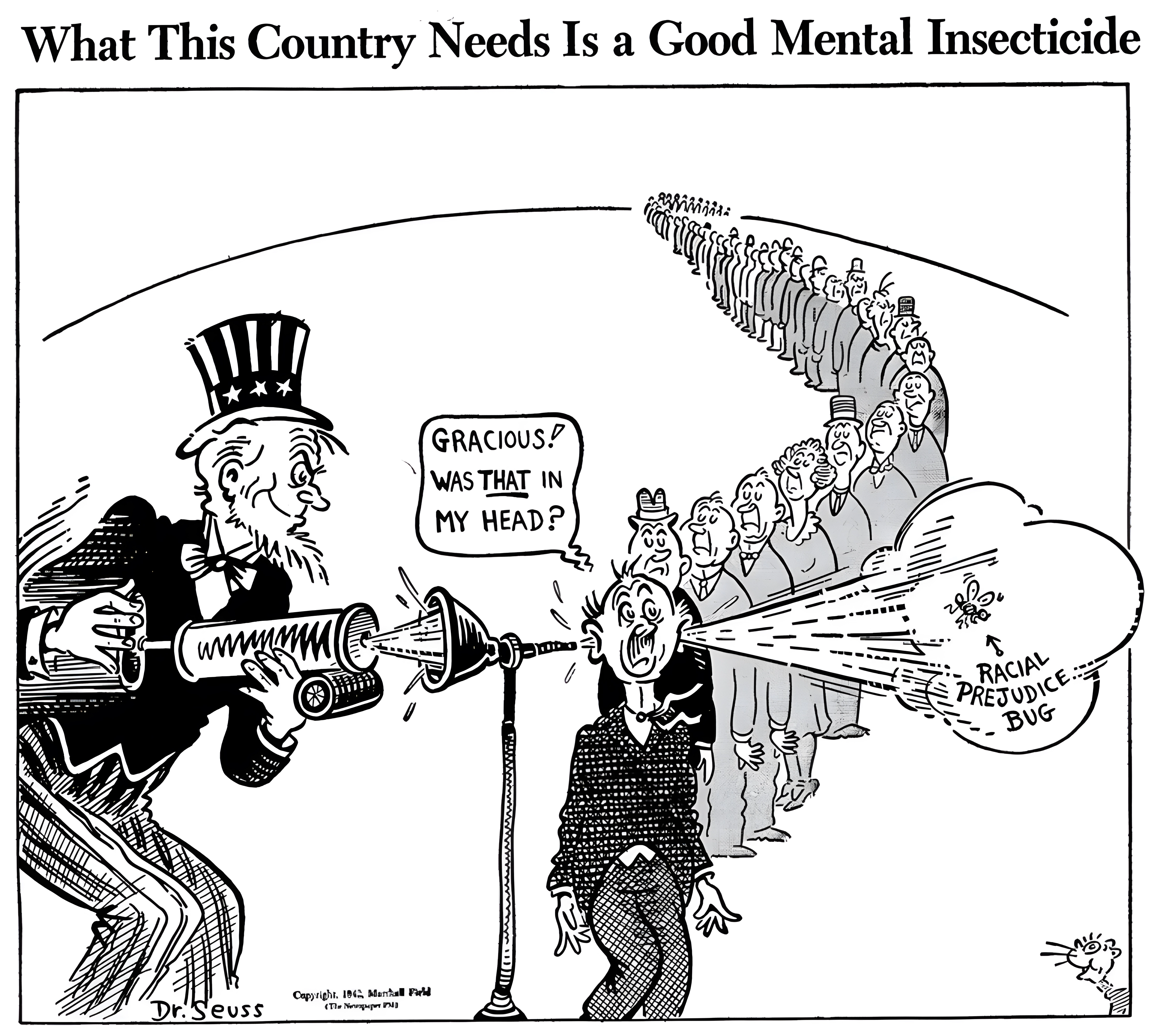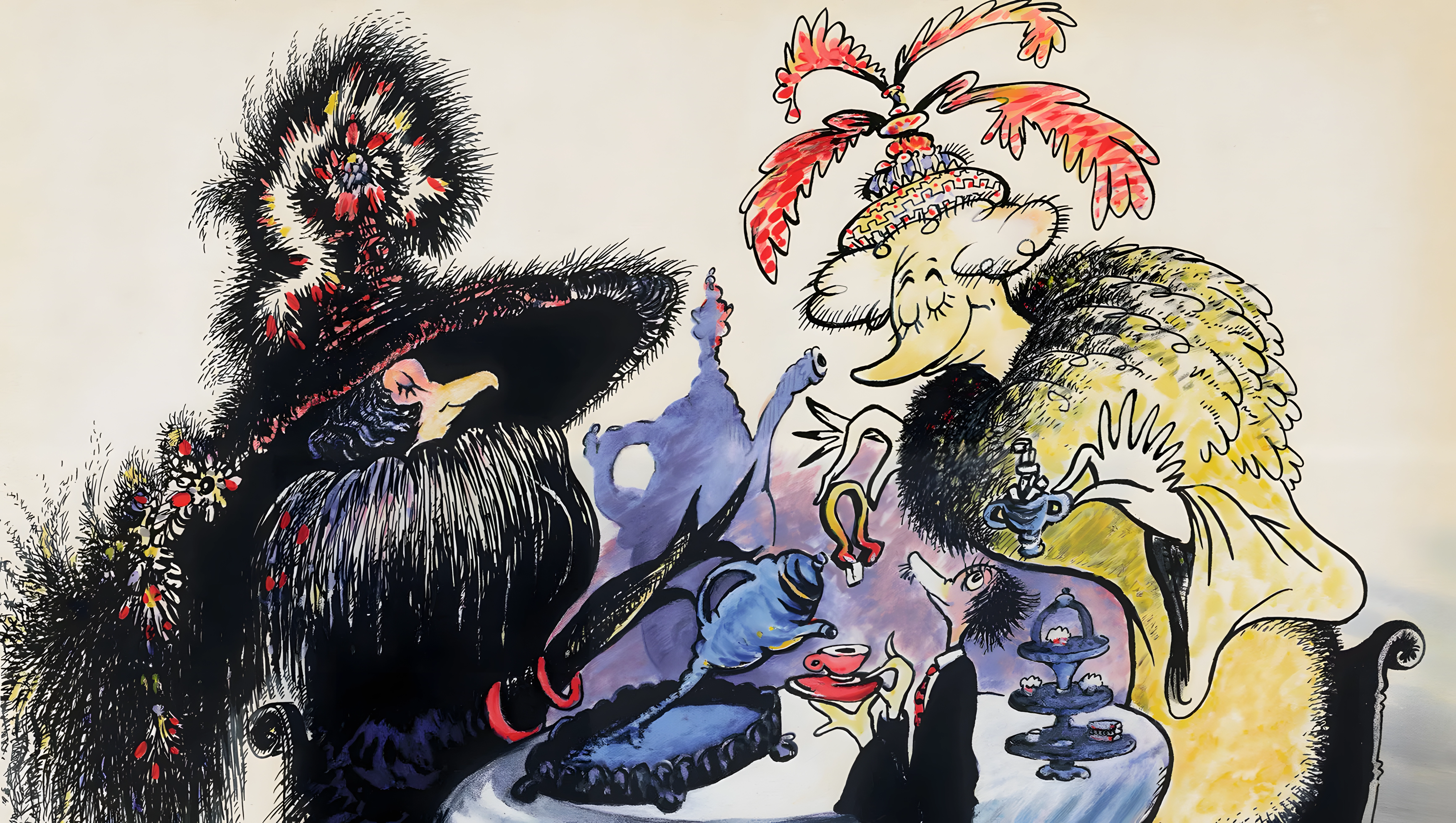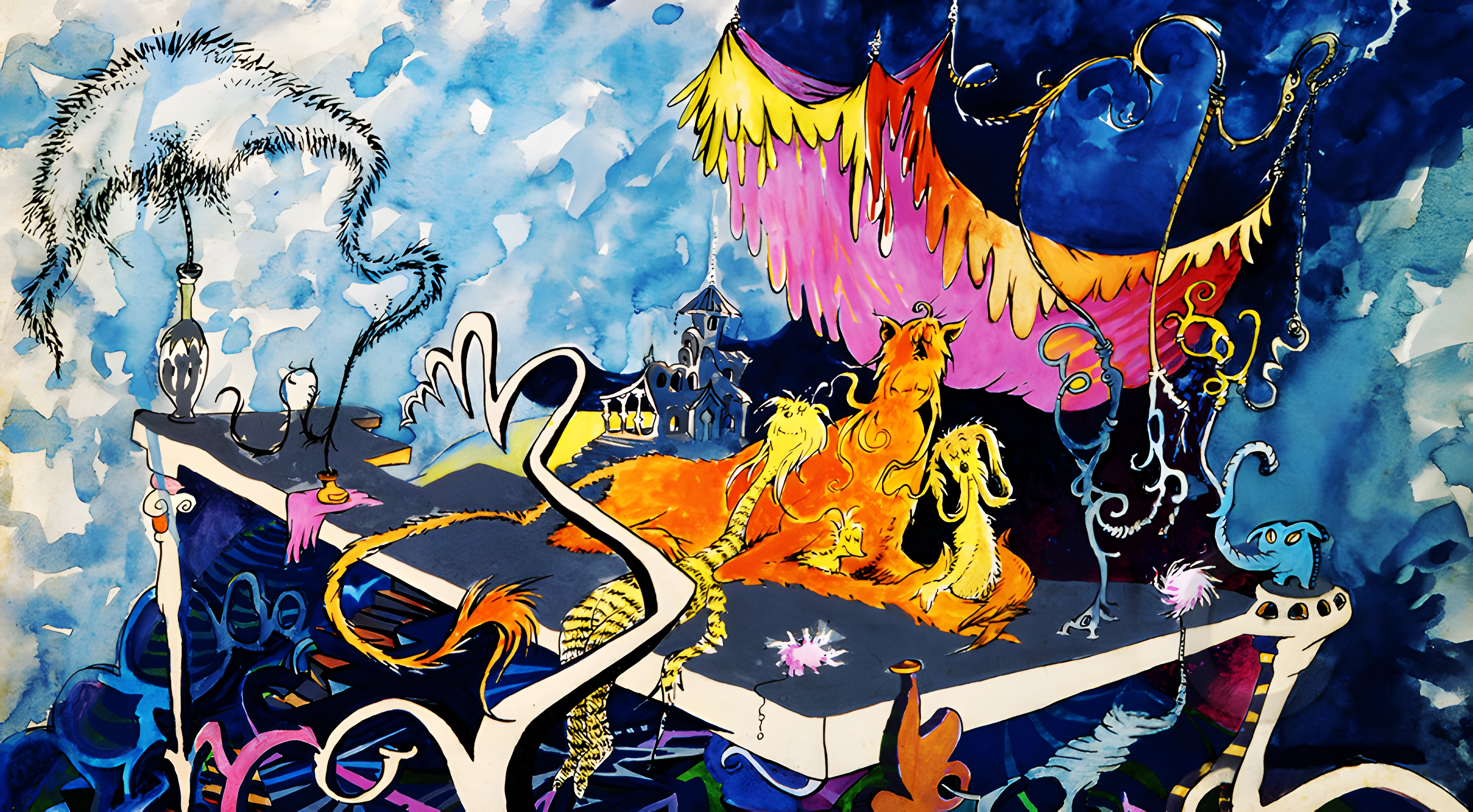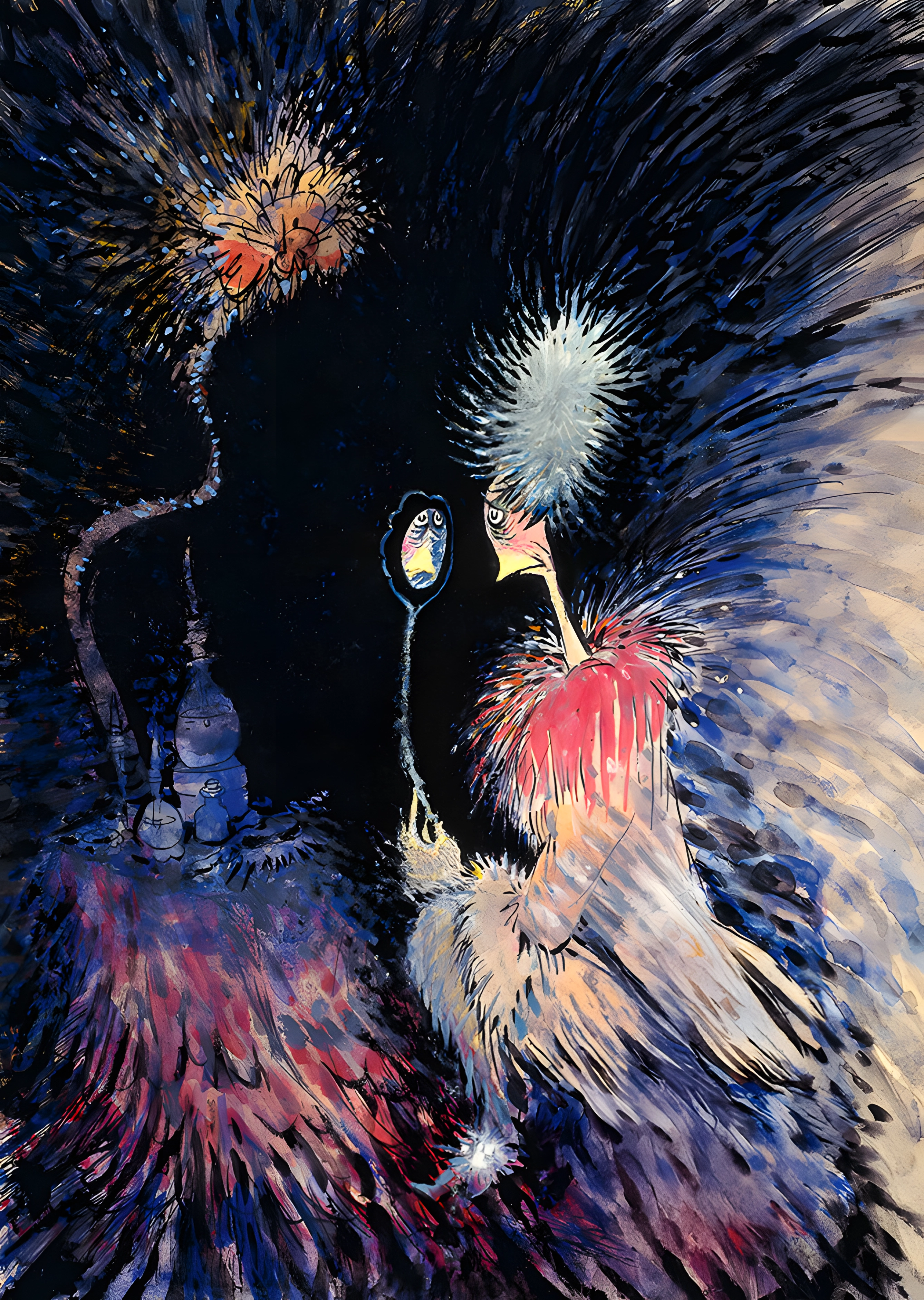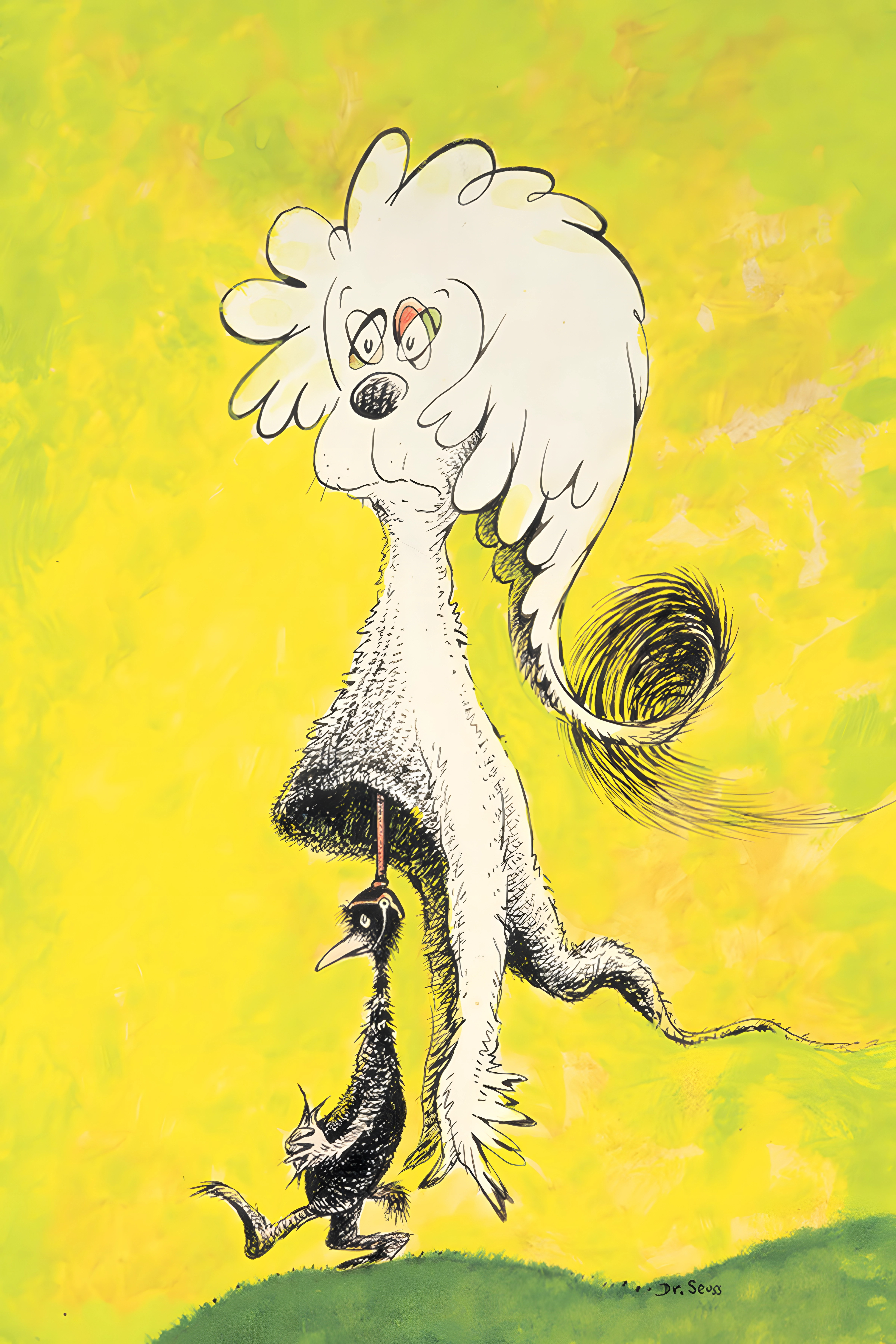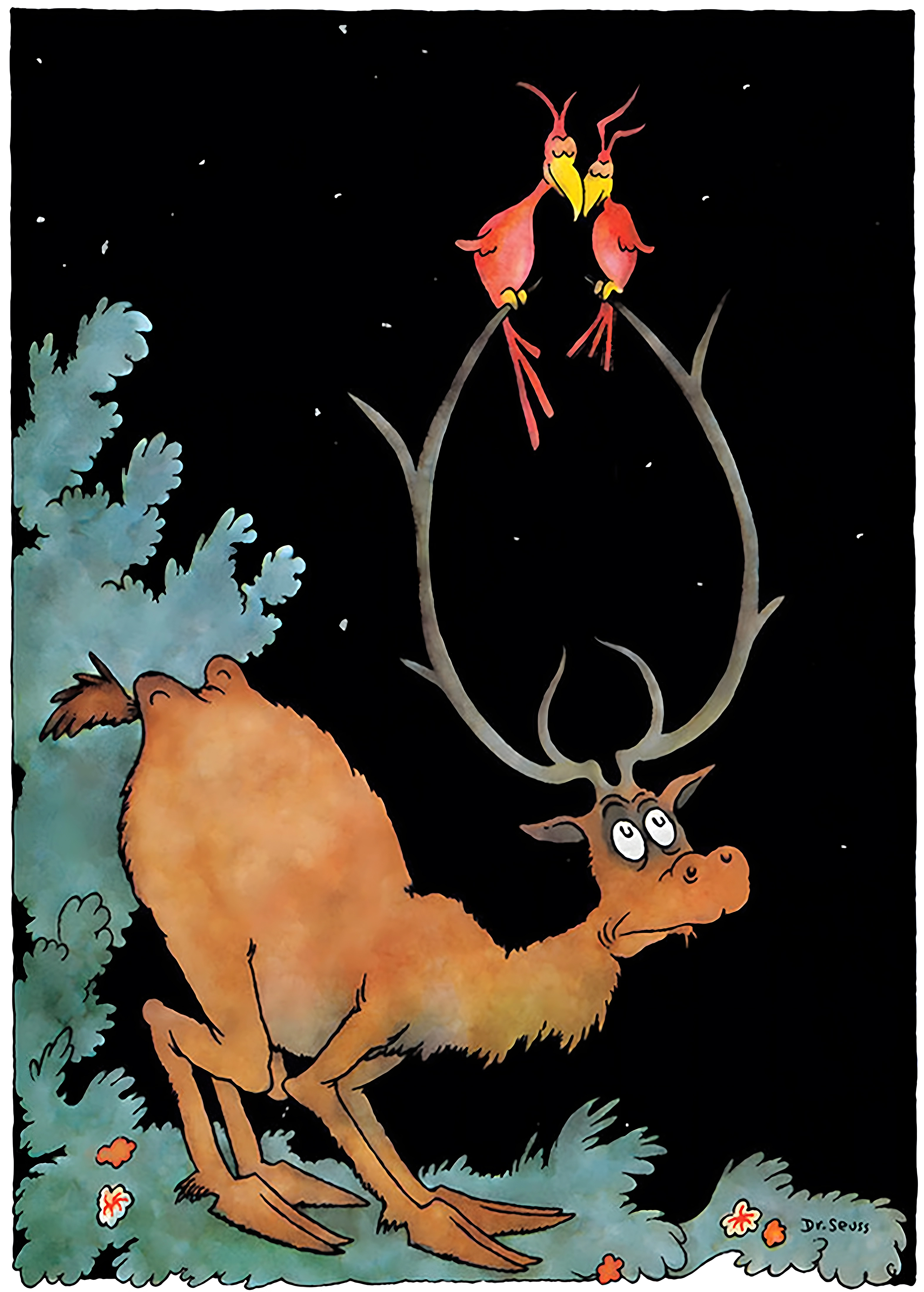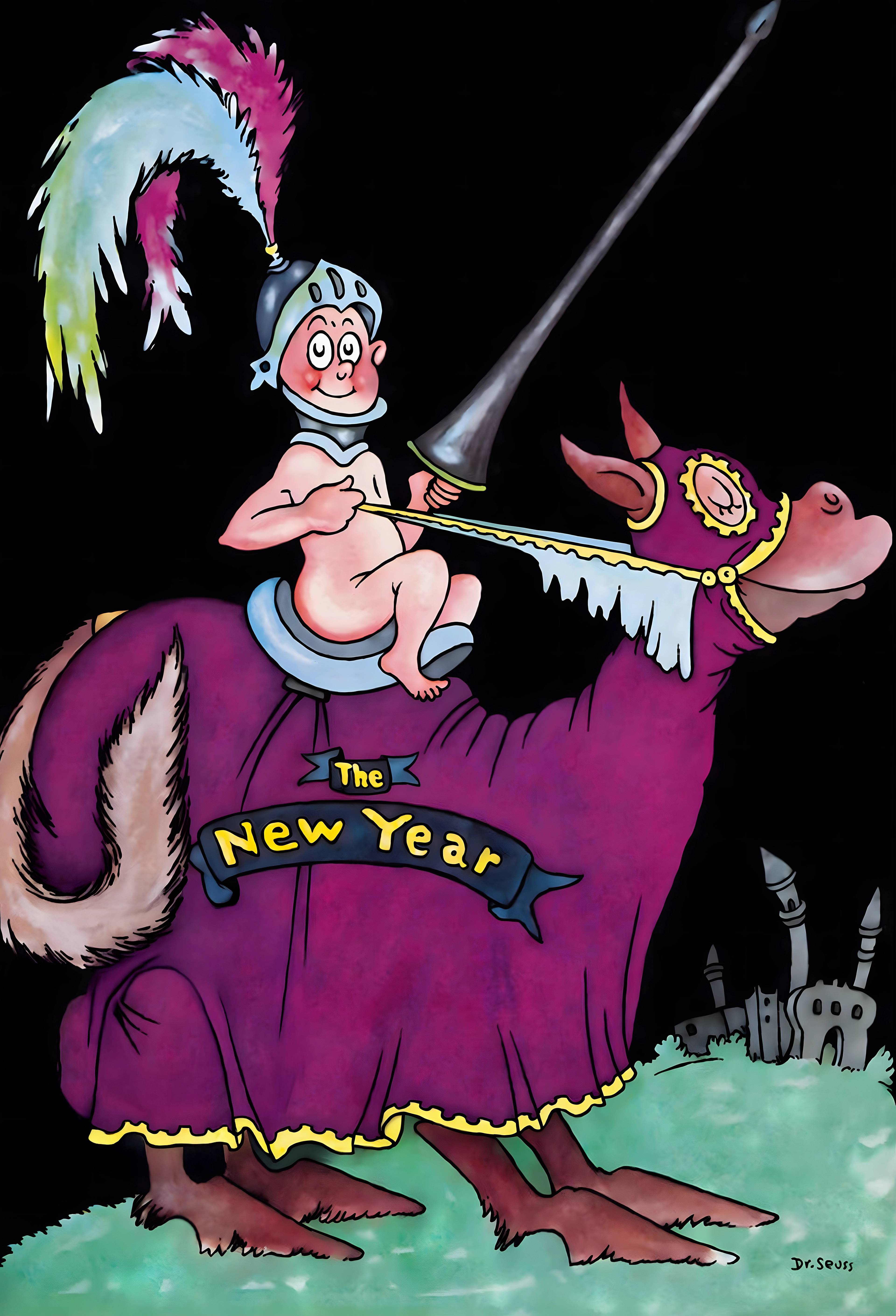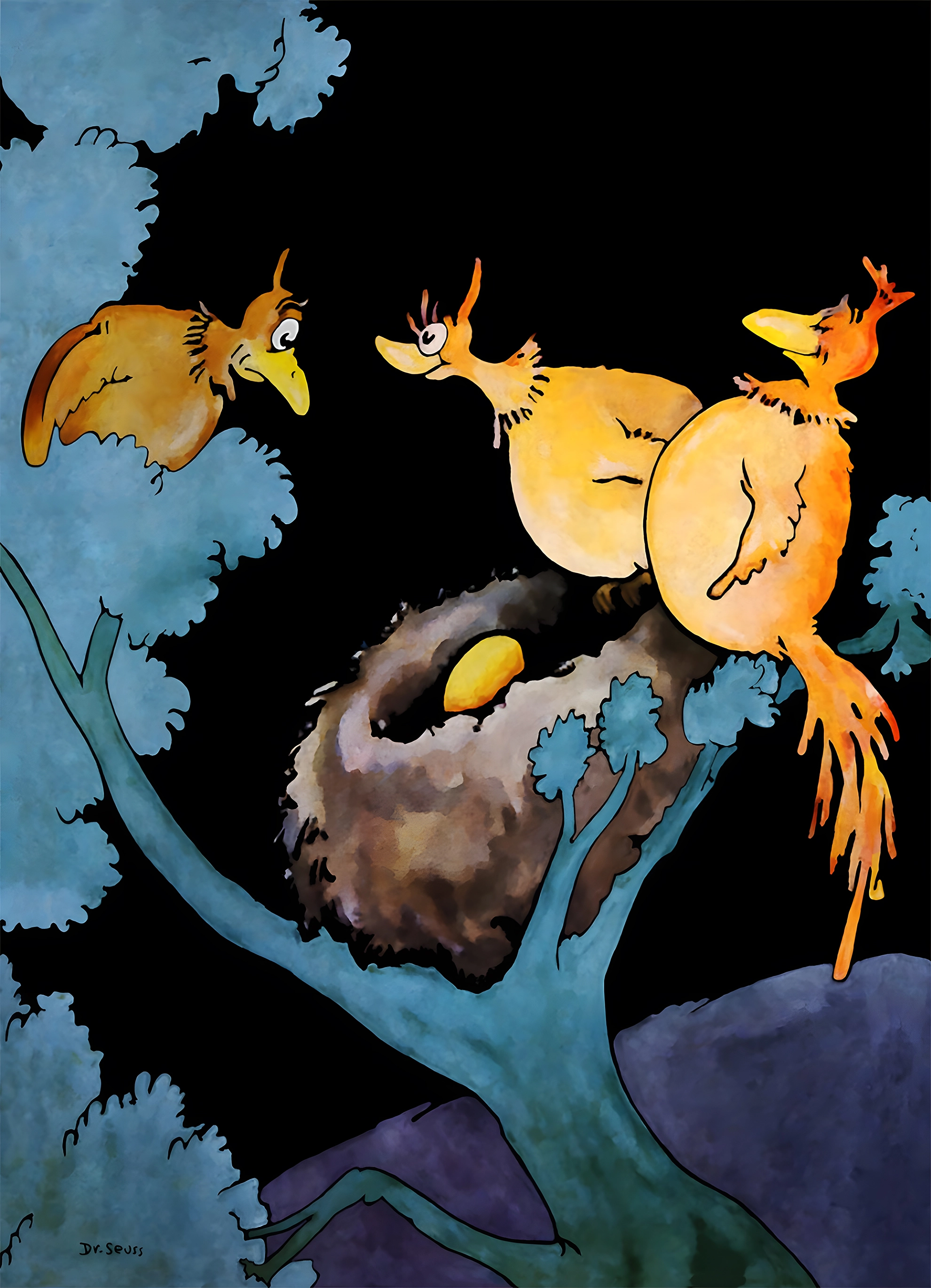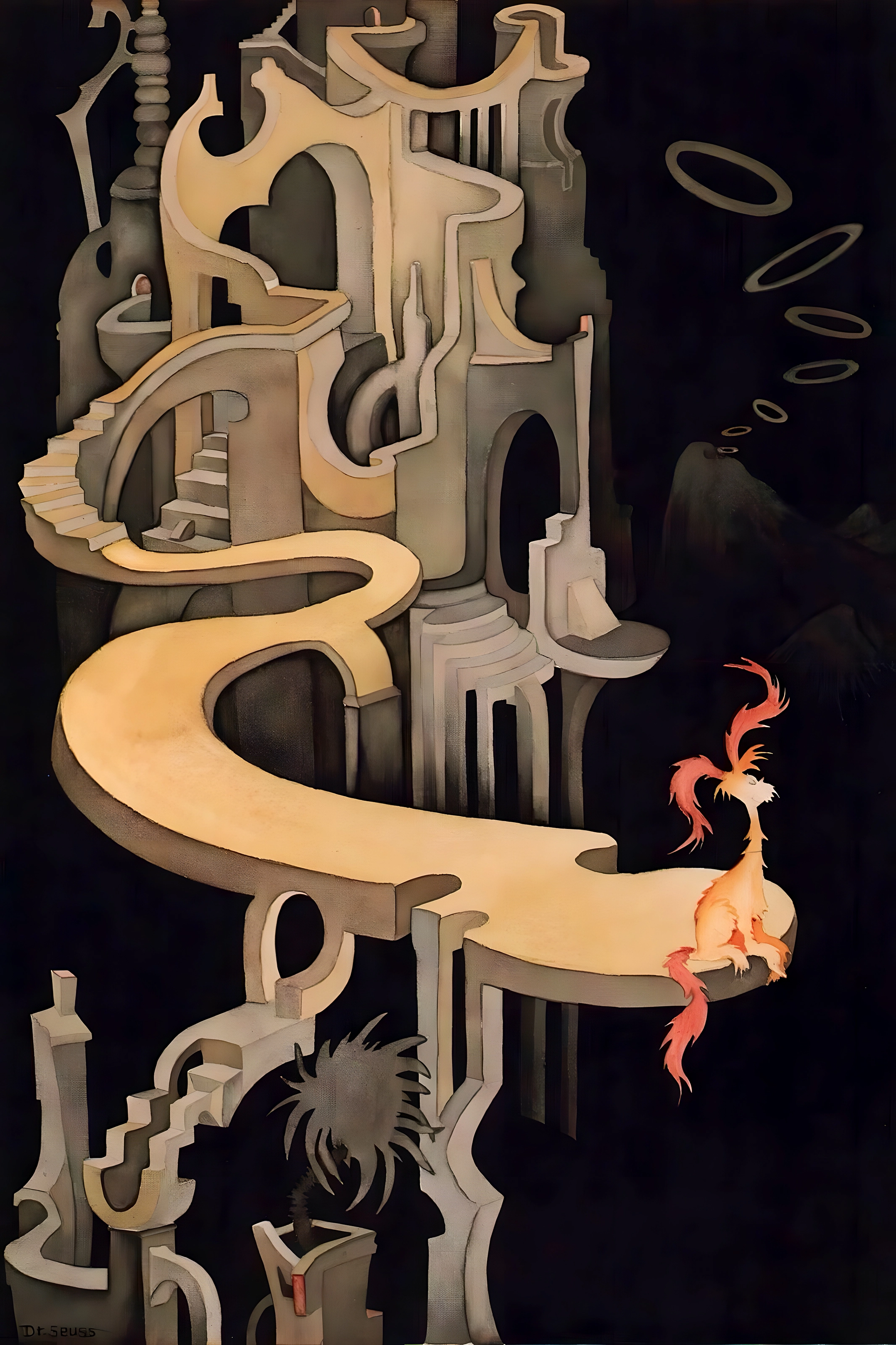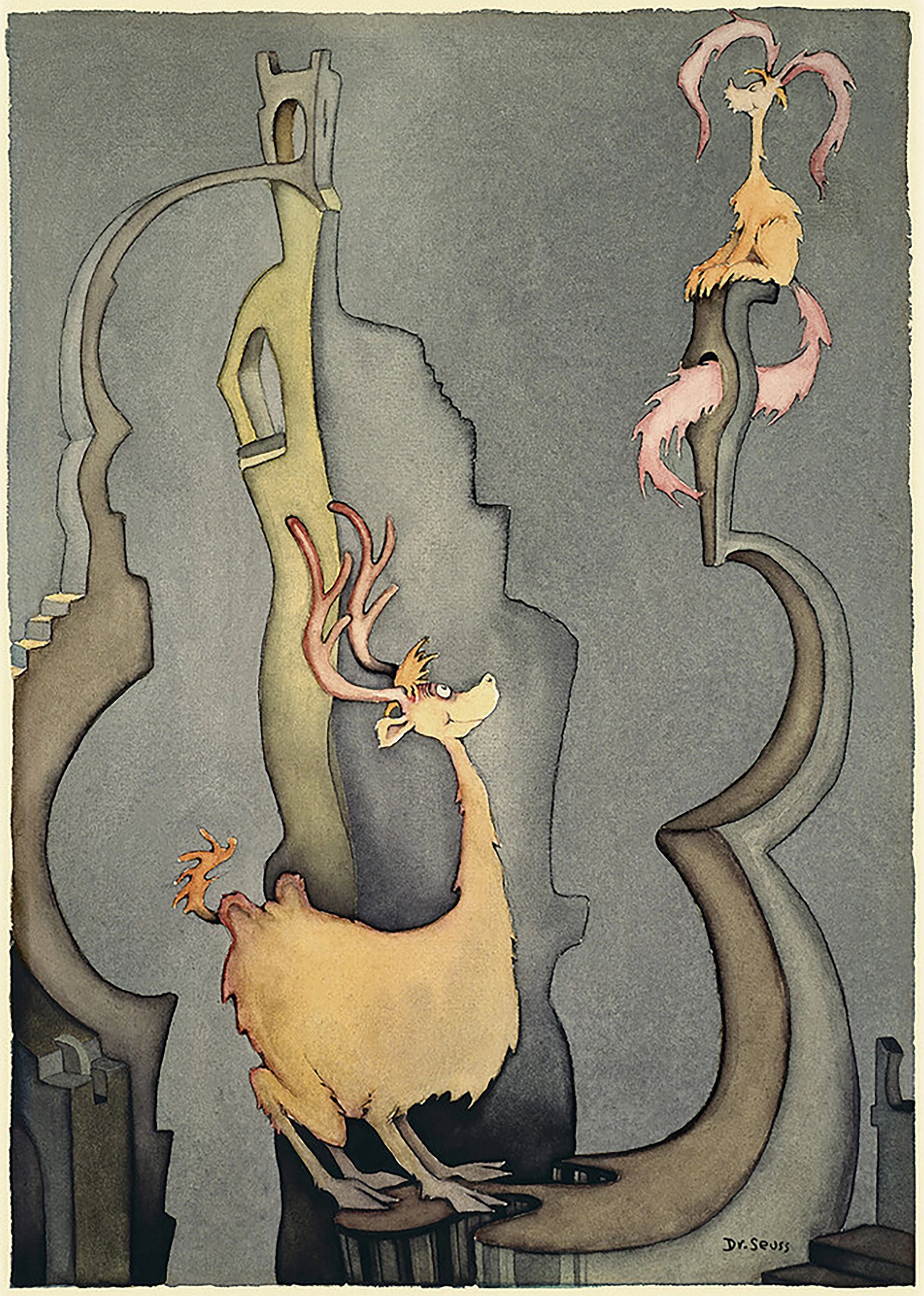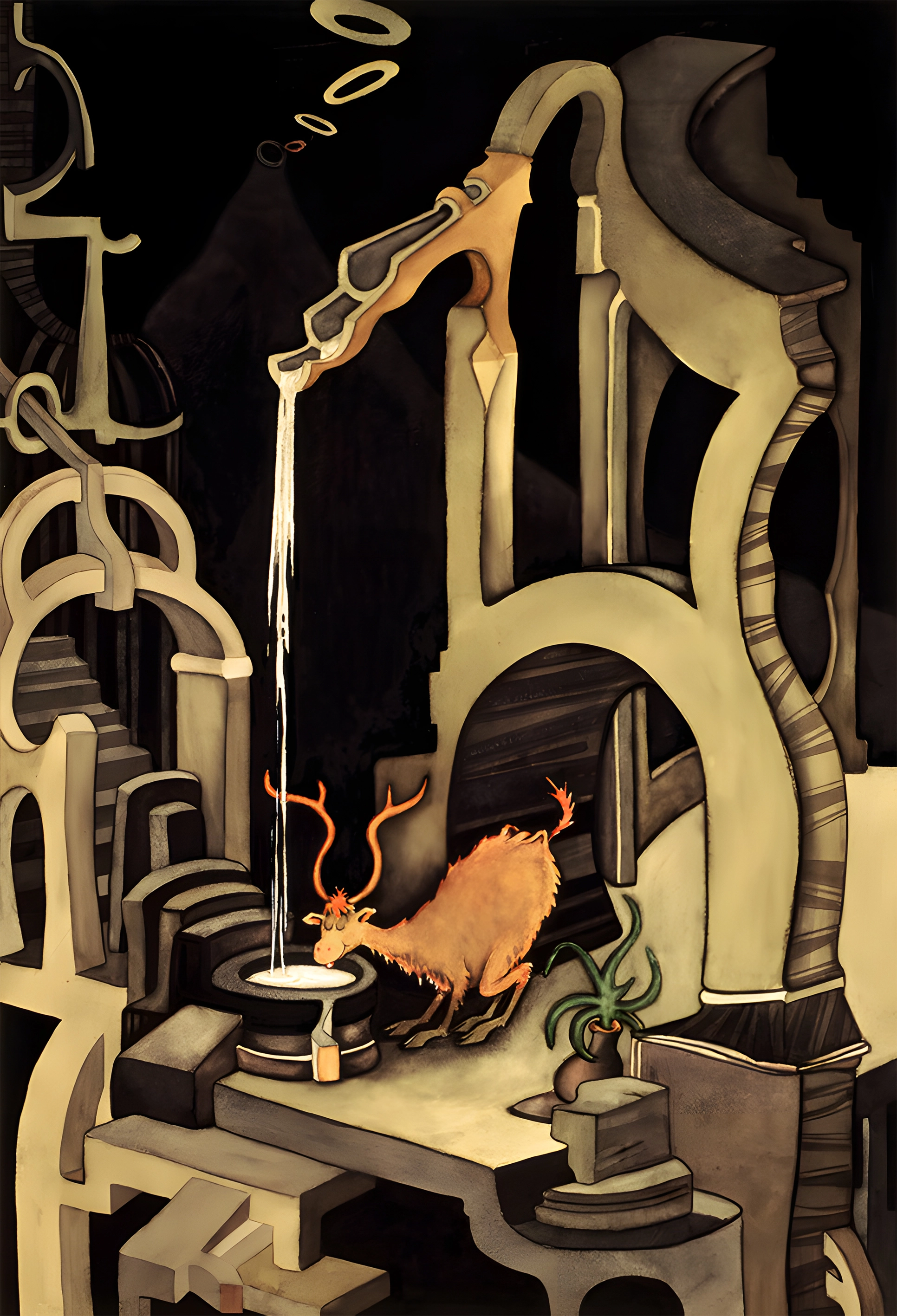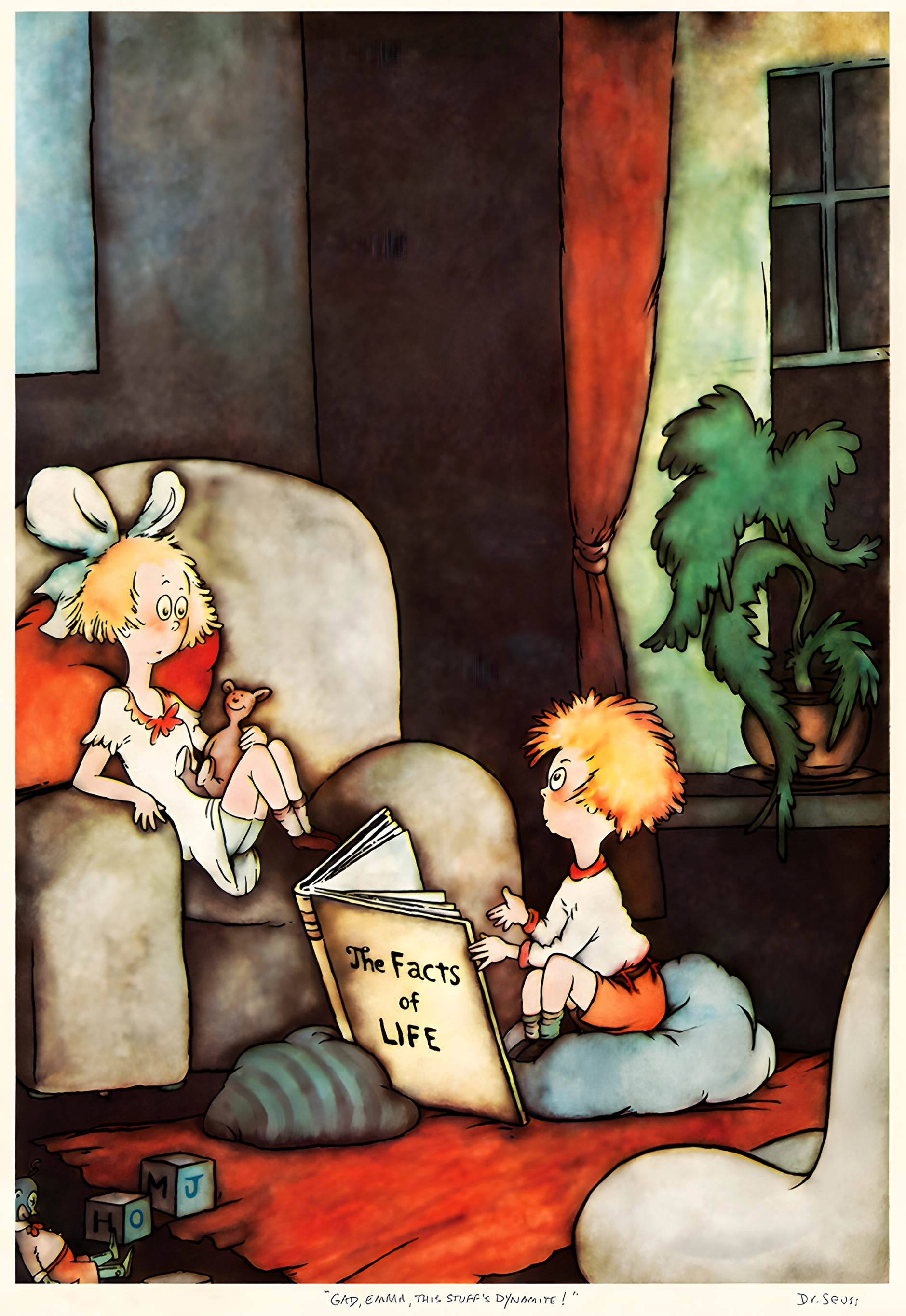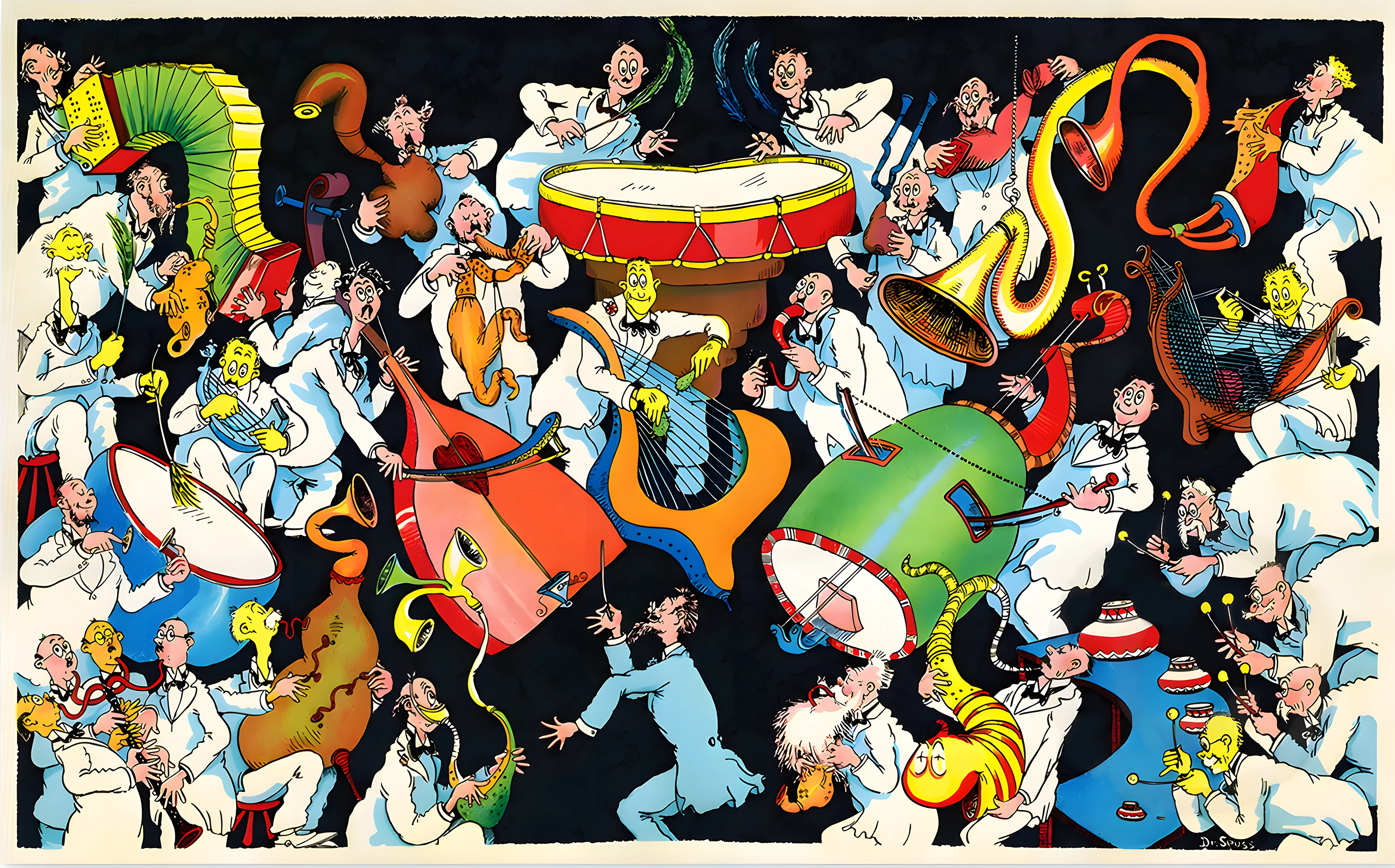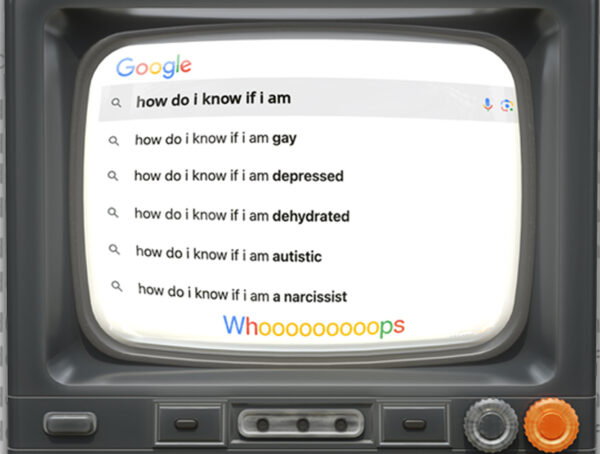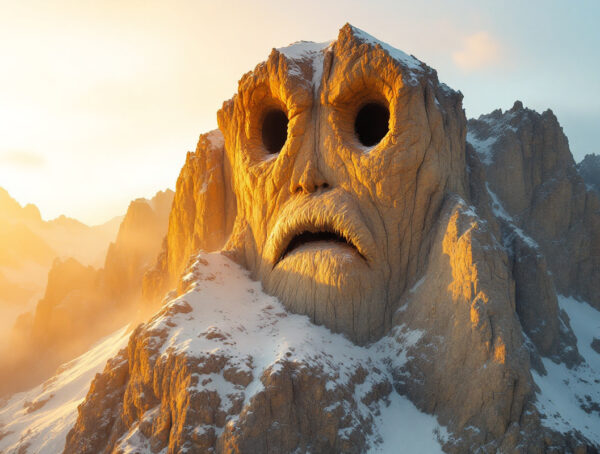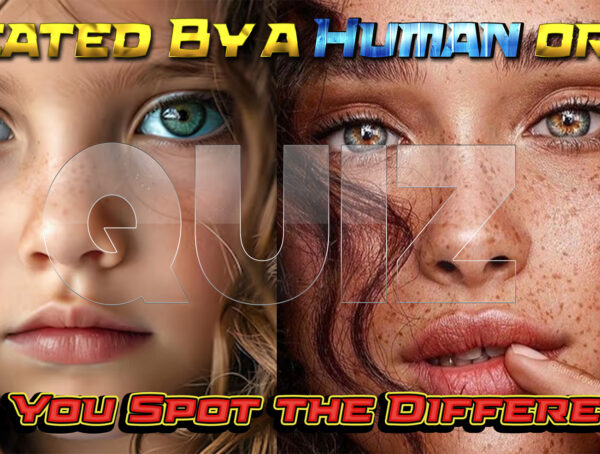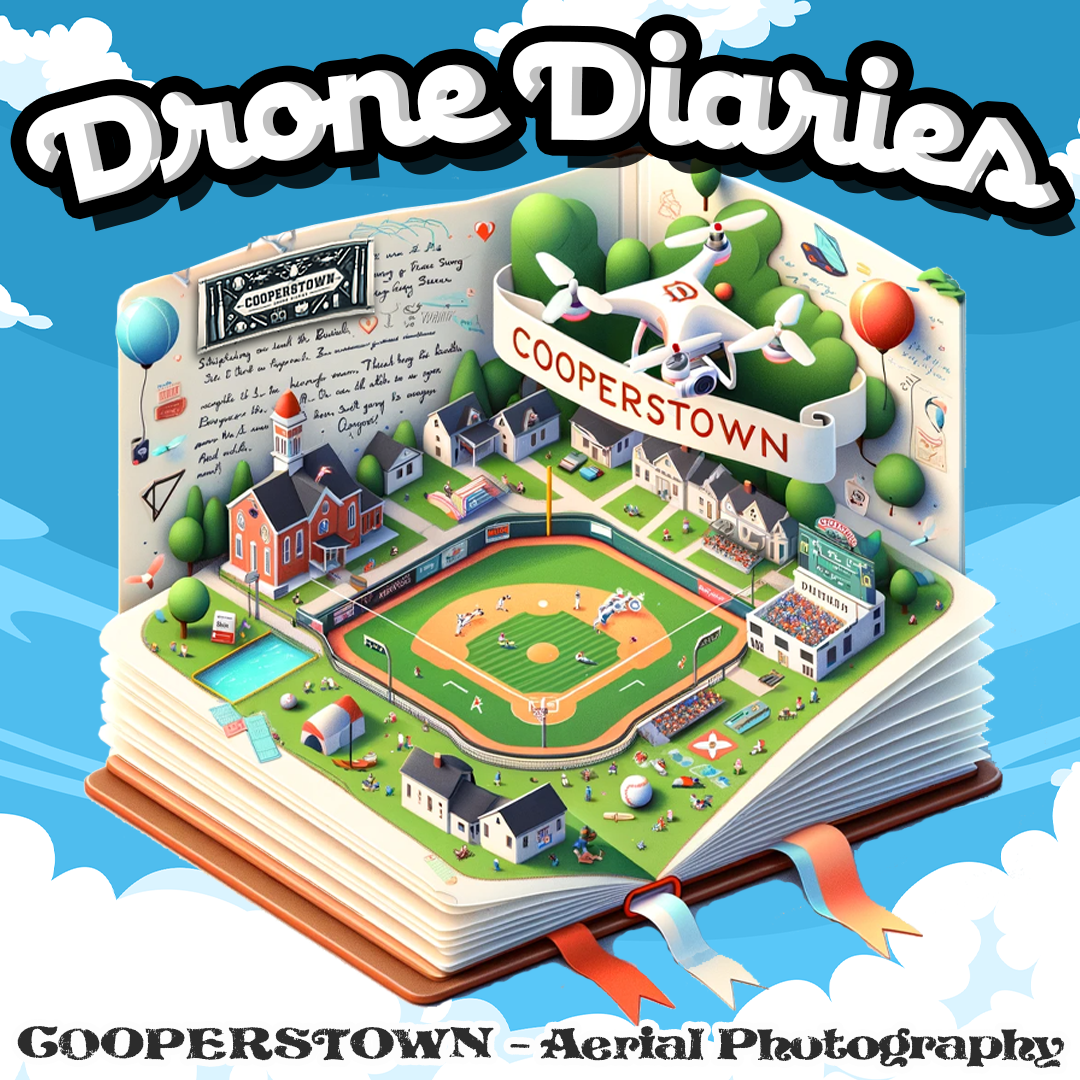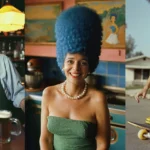Take a look at Dr. Seuss’ dark and racist drawings in high resolution. The beloved architect of childhood whimsy, the mastermind behind Horton and the Grinch, had a far more complex, and at times unsettling, artistic world hiding beneath his rhymes. Before he was charming kids with tales of mischief and moral lessons, he was wielding his pen like a political sledgehammer, sketching wartime propaganda with the same exaggerated absurdity that made his later books so iconic. But that was just the beginning. Beyond the politics, beyond the bedtime stories, Seuss had a surreal, almost psychedelic side, a world of creatures, contradictions, and themes that blurred the line between fantasy and existential dread.
This hidden art, often tucked away in private collections or published posthumously, reveals a version of Seuss that most never knew existed. Some of it is brilliant, some of it is bizarre, and some of it is downright uncomfortable. Whether it’s his WWII-era propaganda, his eerie gothic fantasies, or his playful takes on human vanity and desire, this forgotten Seuss is anything but child’s play.
From Satire to Stereotypes: The Darkest Ink in Seuss’s Past
Dr. Seuss, the author of children’s books that advocate kindness and acceptance, was not always the kind, loving man we have come to think of him as. This cartoon, like many from the early 20th century, uses racial stereotypes that are jarring to modern eyes. It’s uncomfortable, no question. It also forces us to accept that even cultural icons weren’t above the biases of their time. Seuss wasn’t some fringe figure; he was firmly in the mix, and this illustration shows just how much those figures represented popular attitudes of the time.
But to leave the conversation here would be to ignore the full arc of his career. Seuss didn’t stay in this lane. He evolved. He ultimately spurned such portrayals to create The Sneetches, a straightforward allegory for racial equality, followed by Horton Hears a Who! A tale motivated by his post-war thoughts on bias. He later walked back his early missteps, not out of fear of being “canceled” before that was even a thing, but because he almost certainly believed in change. It’s not just about where he started, it’s about where he ended.
The Forbidden Art of Dr. Seuss
We’ve crossed into the Dr. Seuss’s dark artistic side that is surreal and vivid in striking high resolution. Forget the rhyming and Truffula Trees, this is Seuss off the clock before all the junk got made kid-friendly for bed-time. These works can be found in The Secret Art of Dr. Seuss, a cache of his private creations not made for children. And it’s a whole different beast.
The Femme Fatale with the Martini
This is Seuss making a 1920s flapper joke, right? The bird woman exudes high-end decadence while clutching a martini with a misfit feline clinging to her hip like dirty laundry.
This woman has seen it all (so she thinks), with that smirk and fur-lined dress. Seuss definitely had a gift for mashing human vanity and stupid, and this one nails it.
The Lovers Under the Hypnotic Sky
Here we have a rare glimpse of Seuss diving into romance. But, of course, it’s not your typical Hallmark moment. The blue shapes above them are almost hypnotic, suggesting love is an illusion or a dream state.
The arrow scene injects passion, but it’s surgical, sharp, and calculated. This isn’t Horton Hears a Who!This is something we don’t usually see: Seuss exploring adult feelings with his unmistakable style.
The Abstract, Almost Psychedelic Woman
This one is straight out of a fever dream. A birdlike woman melts into the backdrop, peering through her square eyeglasses at the world.
And that creature positioned at her center? Let’s just say it’s suggestive. Dr. Seuss had a great talent for visual innuendo that masked surreal sexual imagery behind a playful, whimsical aspect.
The Woman and the Giant Mouse Trap
And now we get dark. Though it seems like a Seuss-style absurdity; it is not. The picture shows a man in fear of a giant mouse trap, a tiny woman sits in the trap; half goddess, half bait.
Is she a temptress? A victim? A cruel joke on the man who falls for her? This Seuss piece isn’t as straightforward as the author’s other works. There are strong themes of desire, entrapment and playing power games here.
The Woman in the Coffin
This might be the most on-the-nose piece here. A woman who is literally deadpan lounges in her coffin, complete with curled lashes and a bored expression.
The caption? “Oh, I’d love to go to the party but I’m absolutely dead.” Seuss was definitely ahead of the trend with this dark joke. It captures the weariness of having to show up for parties you don’t want to attend.
The Takeaway
Most people do not get to see that side of Dr. Seuss. He wasn’t just the dude who advised youngsters to be sweet and creative out of the box. The artist possessed an imagination that was deep, sometimes dark, and sometimes seductive, and here for us to examine in high resolution. These creations go to show Seuss was not merely a children’s writer; he was a surrealist, satirist, and unfiltered witness to humanity.
Dr. Seuss, the Wartime Propagandist
The famous children’s author Dr. Seuss had an antiwar side as which made the Cat in the hat look like an amateur provocateur. Way before he was trying his hand at green eggs rhyme, he was making biting cartoons taking on everyone from the isolationists to Nazis to race with a pen sharper than bayonets. Let’s break these down.
A 1942 Work Waiting for The Signal from Home
This one is a gut punch. In this image, Seuss portrays Japanese Americans as some form of enemy “fifth column” waiting for instructions from Japan to help undermine the U.S. war effort.
The exaggerated buck teeth, similar faces, and TNT packages suggest they are not American citizens but an infiltrating force. This is a classic example of World War II propaganda that incited the internment of over 120,000 Japanese Americans. Dr. Seauss was fully down with the panic, really tolerant one!
America First and Obliviousness to the Offspring of Others (1941)
This is Seuss calling out the isolationists, the people who decided Hitler rampaging through Europe wasn’t America’s problem. A self-satisfied woman reading the newspaper “America First” is untroubled that the wolf (Hitler) is munching on foreign children.
You can’t claim to be innocent just because you ignore the horrible deeds of others. Seuss was mocking Charles Lindbergh and his America First Committee who thought having nice relations with the Nazis was one solid geopolitical plan.
Russians were murdered for Nazi propaganda
A rare glimpse of Seuss recognizing Soviet suffering. It shows us Joseph Goebbels, Hitler’s propaganda minister, wildly cranking the dials of a machine to inflate casualty totals.
The satire here? The Nazis attempted to trick other countries into thinking they suffered more than they did. Seuss, though very anti-totalitarian, was not deluded about the extent of the war. It’s funny how fast the U.S. went from being uncertain allies of Russia to Cold War enemies.
A Well Wanted Family Bathtub
Another jab at isolationists. This image shows an ignorant American enjoying his bath while fascism is literally crawling up the drain.
The man is wearing his “America First” cap so he thinks he is safe from the Nazi creatures swarming the “American Hemisphere”. That was Seuss who hammered in that, “You may think that this isn’t our war, but just wait until it arrives on our doorstep!”
Mental Insecticide (1942)
Here’s where Seuss tries to redeem himself a bit. A guy infected with the racial prejudice bug gets some old fashioned deprogramming from Uncle Sam.
Seuss’s ‘delinquent’ man was made to brainwash by Uncle Sam to rid his ‘virus’ of racial prejudice. He ended up feeling guilty for the cartoons and went on to write Horton Hears a Who! as an apology. Better late than never.
The Main Point
Dr. Seuss wasn’t just a silly poet. He was a political fighter, punching fascists, isolationists, and later himself in the face. His cartoons were tools; blunt instruments with moral force almost always, but not always! The lesser-known Dr. Seuss consists of war, propaganda, and the ugly truths of our history, not all Whos and Sneetches.
Seuss’s Nightmares: The Surreal and the Sinister
Now we’re stepping into the Dr. Seuss dimension with weirder-than-cool imageryless Cat in the Hat and more Salvador Dalí on a bad trip. This is the stuff he never read to kids. The “Secret Art” collection reveals his bizarre and often disturbing side. Let’s take a look at some of these high resolution Dr. Seuss photos.
The Absurdly Extravagant Tea Party
This is Seuss’ fever dream of that increasingly rarefied segment of society, high society. Two birds mean and mad are sitting at a table of excess. One woman flaunts a look dripping with black fur, half hidden under a chaotic explosion of wild plumes.
The other gestures wildly, red and gold headdress as crazy as something from a wild party. The waiter? A poor soul trying to navigate this absurd scene. Seuss is very cynical about wealth and vanity so this one makes fun of the upper class in the most flamboyant way possible.
The Lounge of the Strange Creatures
Seuss gives us a peek inside a king’s chamber, except instead of kings and queens, there are strange lounging beasts with mustaches or limbs. It’s colorful and wavy everywhere.
The bed seems to be actually alive. The decoration seems to be dripping off the walls. Everything is curvy as if seen through a fun house mirror. The deep blue and gold hues make it almost dreamlike. Seuss was unshackled. No rules, no morals, just unlimited imagination.
The Haunted Reflection
Here we go. Full-blown gothic horror Seuss. A woman wreathed in dark black fur holds up a mirror, to find herself looking back in a creepy distortion.
The sharp and ragged strokes in electric blue and blood-red give this piece an otherworldly vibe. This isn’t merely a charater study, it’s an exploration of existential dread. It’s about our vanities, our sense of self and possibly the horrendous truth that we are not who we think we are.
The Existentially Exhausted Dog
This poor thing looks like it’s been through everything. This expression is Seuss 100%. Tt’s funny but also relatable.
But then there is the bird hanging from his head like a hat, a decorative touch, with a hand on its heart. There might be a message that relates to burdens. It could refer to how others rely on people, or even a bird on a dog! Either way, this dog needs a break.
The Sinister Pool Shark
Ah, Seuss’s take on a hustler. This glowing-eyed cat, wearing a red tie, sets up for a shot on an odd-shaped pool table.
It has a smoky, noir look, like something out of an underworld casino where deals are made and souls get lost. The Cat in the Hat’s evil twin, perhaps? Seuss was involved in darker themes, and this is true.
The Living Shower Curtain
This one is nightmare fuel. A figure behind the green curtain of The Cat in the Hat, just showering under a growing shower-head. Their feet? Clawed and monstrous.
The vibe here is eerie, almost alien. Is the curtain guarding them from us, or is it guarding us from them? More like a presence in the basement or attic.
In a Nutshell
Dr Seuss was not simply a poet; he was also a child psychologist. He was a surrealist, satirist, and sometimes, a full-blown horror artist. These pieces show the odd, creepy, and downright disturbing reality of his genius who never meant to write kids’ stories.
Seuss Gets Weird: Whimsy with an Edge
Dr. Seuss was known for his weird nonsense but also for ability to write surrealism in a way that leaves a person just uncomfortable enough to not forget. These images are reflective of Dr. Seuss’s absurdity, albeit some playfully while others darkly.
The Overburdened Deer
These two birds have taken over this deer’s whole life and are using its antlers as a love nest. He appears shocked to find that life as a piece of furniture is his main calling.
This animal being hilarious is the signature to Dr Seuss’ style, twisting the plight of this animal into something ridiculous yet relatable. At one point or the other, our efforts tend to get utilized as a resting place for someone.
The New Year’s Baby, But Make It Medieval
Here’s Seuss taking the whole “Baby New Year” thing surprisingly triumphant in the face of defeat. The naked knight rides an odd, purple horse-like beast that appears to be asleep.
It’s a funny contrast; he has the right outfit and attitude, but this is definitely not a warhorse. It looks like it should be snoozing in a field. It seems that Seuss is laughing at how ridiculous all these celebrations are, or perhaps he is just making fun of a way of celebrating the New Year.
The Disapproving Bird Dad
A classic family drama. Two birdy parents’ nest with a golden egg and a crooked eyebrow throwaway. Is this an ex? An in-law? A neighbor judging their parenting choices?
Then, surely, must the parents and the egg be very human. Seuss loved attaching everyday emotions to his weird and impossible creatures after all.
The Impossible Stairway to Nowhere
This is where things take a turn. Seuss enters the realm of visual deceptions and existential reservations. The creature at the bottom, gazing up at this tortuous, Escher-like, winding nest of stairs, seems to be in a quandary. Is it the path to enlightenment?
A metaphor for life’s endless obstacles? Is Seuss just messing with our heads? Or just giving the bus a dreamlike feel? Either way, it’s one of his more haunting pieces.
The Deer and the Aloof Aristocrat
This feels like a scene from a Seussian soap opera. A deer-like creature gazes longingly at a regal pink plumed creature sitting on a pedestal.
The spatial relationships, the twisting impossible architecture, further add the distance. Is this love? Envy? A class divide? Whatever the case is, the deer seems to know it’s never getting on that pedestal, and the one perched there seems pretty all right with that.
The Deer at the Impossible Fountain
We’ve moved from longing to survival. Here, the deer finally finds a something physical – a droplet of water from a durably doing fountain.
The architecture is Escher-like, a labyrinth of arches and staircases leading nowhere. There’s an eerie solitude to this one, like the deer has been wandering for ages and this small drink is its only moment of relief.
The Eye-Opening Reality Check
Now we switch from the existential surrealism to the childhood absurd. The two children are seated in the dim light of a living room, holding a very big book called The Facts of Life.
The caption? “Gad, Emma, this stuff’s dynamite!This is Seuss being cheeky with kids when they become aware of reality, ie. the world we live in is a much bigger mess than what the bedtime stories make it out to be.
Seussian Symphony
Dr. Seuss was never subtle, and this chaotic orchestra proves it. ROTD, musicians decked in white suits are wrestling with our instruments as they twist, stretch & even grow, and to be honest some of them look more like pets than trumpets.
The wild-eyed conductor, who seems to be losing control, tries to manage everything, which seems pure Seussian chaos. It’s not only a show it is a surreal dream of sound and spectacle. The wild expressions and funny-shaped instruments add up to a delightful disaster, one that could have made a symphony but turned into a Seussian cacophony.
The Short Version
Seuss wasn’t just about rhymes and nonsense. He could turn any big deal, be it falling in love, fighting for survival or learning about the origin of babies, into something exaggeratedly relatable. When we see the usually comic Seuss in an exaggerated surreal context, there’s an innate wish for the meaning and a wonder about the resonance behind this high resolution art of Dr Seuss.
Bringing it all Together
Dr. Seuss wasn’t just a children’s author; he was a satirist, a surrealist, and at times, an unapologetic propagandist. His hidden works expose a mind that was endlessly curious, sometimes critical, sometimes problematic, but always pushing the boundaries of art and storytelling. He could craft heartwarming tales of acceptance one moment and churn out brutal war cartoons the next. He could dream up charming Whos and Sneetches while privately painting creatures that belonged in a fever dream.
The sanitized version of Seuss; the one neatly packaged in rhyming couplets, is only half the story. To truly understand his genius, you have to dive into the strange, the unsettling, and even the uncomfortable corners of his imagination. Whether you find it brilliant or disturbing, one thing is certain: the man who told us to think outside the box was living far outside it himself.
More from Fun
You Won’t Believe What People Are Googling: Auto-Suggest Nightmares
Without a doubt, Google autocomplete is one of the most illuminating windows into the human psyche. It’s not some cold, …
Seeing Faces in Everyday Objects? Here’s What’s Really Happening
Human cognition is both a marvel and a mystery. It is a tool forged in the fires of evolution, honed …
Can You Tell If This Art Is Human or AI? Most People Can’t!
Once upon a time, art was the way humans flexed, a way to show off our emotions, imagination, and skill. …






